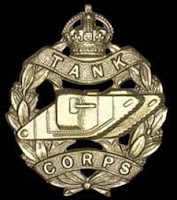 |
| Welcoming in the New Year ! 1959 |
With Christmas fast approaching, I thought it might be fun to write about some of the holiday traditions that have been passed on in our family. Christmas would not be complete without the family Christmas tree. In my family growing up, the Christmas tree was an important family tradition. Never mind needing it for something to put gifts under (although it was most certainly used for that). It's most important role was always as a beautiful backdrop for holiday photos.
 |
| 1960 (Yup, that's me with my new doll, Mandy!) |
Our Christmas trees seemed to undergo a kind of evolution through the years. It is fun to look back and see what the fashionable trees of the time were. In the 50's and 60's, we always had a live tree. This is probably because artificial trees had not been invented yet. As a young child, I knocked over a couple of these trees, which resulted in a lot of smashed glass on the hardwood floor. My favourite decorations during this decade were the hand blown glass birds and reindeer ornaments that clipped onto the branches. I also loved the "bubbler's", clear glass tubes filled with coloured liquid that would bubble when the heat from the bulb made them boil. These were a bit dangerous for a small child, but kept me mesmerized for hours. Another ornament that I loved was the little porcelain bell that Santa gave out at the local Woodward's Department store. It made the most heavenly sound and made me super excited for Santa to come to my house.
 |
| "Tin Foil" Christmas Tree - 1968 |
My mom went a bit crazy in the latter part of the 60's. This was during the psychedelic age, when everything was a bit surreal. That's when we got this beautiful tin foil tree, that looked like something I made in my kindergarten class. The problem with this tree was that you had to be really careful if you put electric lights on it because the tree could electrocute you! The solution was to get a flood light and shine it on the tree. You could even buy more than one flood light in different colours for a variety of looks, or get one of the fancy kind that had a colour wheel made of gels that rotated from one colour to the next. This tree marked the birth of the colour co-ordinated, mono-chromatic look. The good thing about it was that the branches were very sturdy and it didn't need a lot of ornaments to be splashy (definitely saved on the Christmas decoration budget). When the tree was worn out, the branches could possibly be recycled and used as a bottle brush!
 |
| Captivated by a bird ornament on our blue tree. |
Ahh, the 70's. Coloured Christmas trees replaced the metallic ones of the 60's. Since blue was by mother's favourite colour, we had to have a blue tree. The obvious advantage was with a plastic tree we no longer had to worry about getting electrocuted. Our tree also had a kind of ethereal quality when the beautiful white mini lights made the fake snow frosting on the branches sparkle. This tree, as I recall, had a funny smell, probably due to all the chemicals that went into making it. It was lovely, though, and was a perfect backdrop to set the mood for an enchanted Christmas. I never really thought the blue blended in all that well with the traditional Christmas colours of red and green. I did get a little tired of the colour, and to this day, I can't stand the colour blue. There's nothing like the smell of plastic to get you into the holiday spirit.
 |
| Our most traditonal tree - 1987 |
In the 80's, I now had children of my own, and went back to the earlier tradition of having a live Christmas tree for a few years. While our kids were little, we made a bit of a ritual around picking out and decorating the tree. It was a lot of fun stringing popcorn garlands, making hand made decorations and eating rice krispie treats. I must admit that I have fond memories of these times. We would all drive to the local tree lot when it was -30 degrees, freeze our butts off picking out a tree, tie it to the top of our car (hoping that it wouldn't fall off) and gently lift it to it's place of honour in the basement. A few too many times we miscalculated the height of the tree and had to lob off the top quite a bit more than it should have been, giving it a strange volcano shape. If we didn't do this, we ran the risk of scraping the stipple off our our ceiling, which we learned the hard way, left us with reminders of Christmas's past all the year through. Of course, finding the right tree holder was always a bit of a challenge when you opted for a live tree. It seemed like we bought a new one every year, and every year we had the same old problem with trying to keep the tree from falling over. Sometimes we even had to tie it to the wall!
 |
| Proudly showing off the tree - 1991 |
In the 90's I got the creative urge to follow in my mother's footsteps and decided that it would be great to have a beautiful colour co-ordinated fake tree (fake trees definitely have their advantages). It looked like a real tree (well pretty close anyway), and it came with little pine cones that you could soak in a kind of oil that smelled like real pine boughs. Well that was the theory anyway. I really enjoyed this tree for a couple of years. I could make it a thing of beauty with all the matching ornaments. Unfortunately my children and husband didn't see it that way. They insisted that if I could have my own tree, that they could have their own as well, and for a few years, we ended up with two trees! Of course, they wanted a real tree, and so all the advantages of the fake tree disappeared and it ended up being twice and much work and very little satisfaction for me.
 |
| Our "Charlie Brown" Christmas Tree - 2007 |
In the 2000's we developed a new family tradition surrounding the tree. I'm not exactly sure how it happened, but it seems to have come about as a result of my complaining about having to go out in the cold, having to clean up all the pines needles, etc, etc. By this time I was really tired of putting up two trees and really wanted my fake tree to be the only Christmas tree. My family kept insisting that we put up a real tree. I would usually give in, but to get back at me for being such a grinch about it, they all decided that to make me even more angry (all in fun, of course) They would look for the ugliest tree on the lot! They have succeeded in finding a lot of ugly trees through the years, but the best ugliest tree had to be the year we waited until the 23rd of Dec to get the tree, when there were no more left on any lot in town. That year, we ended up with a branch for a tree! Although they look sad in this picture, my children and husband were really ecstatic to have found such a great ugly tree!
I wonder what the new trends will be in our family Christmas tree in the coming decade. One thing I know for sure, Christmas would not be the same without the family Christmas Tree, in all it's many forms!





























